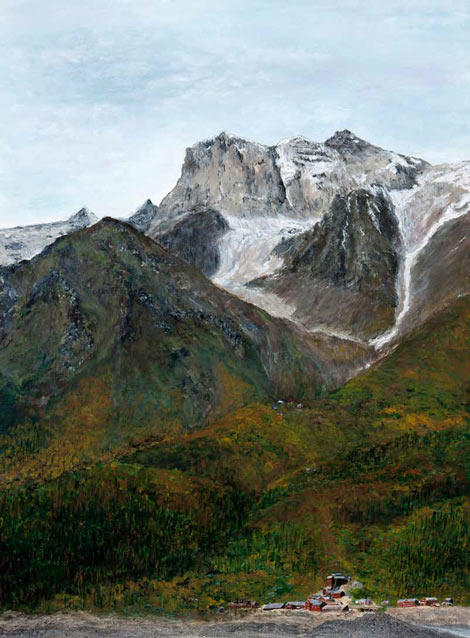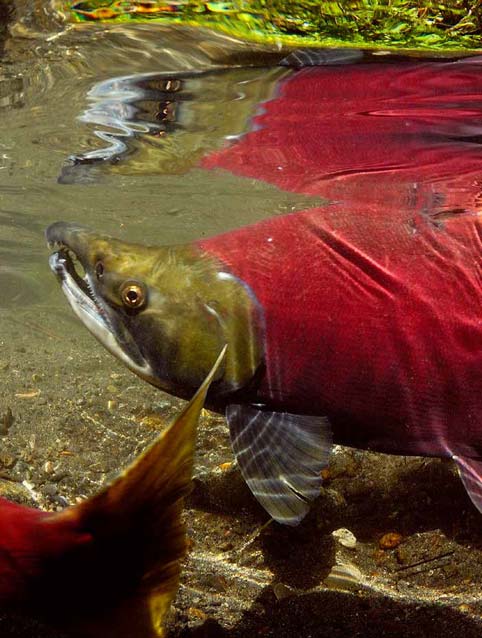This issue of Alaska Park Science covers a lot of ground: land status, mining history, natural and cultural resource protection, reclamation, and hazard abatement. Our articles are drawn from Alaska where mining and oil extraction are generally separate activities, and Canada where oil sand operations involve both.

Robert A. Winfree
This issue of Alaska Park Science covers a lot of ground: land status, mining history, natural and cultural resource protection, reclamation, and hazard abatement. Our articles are drawn from Alaska where mining and oil extraction are generally separate activities, and Canada where oil sand operations involve both. There’s no denying that energy and mineral extraction have been and will continue to
be important across the North for a long time. Mining and energy-related industries provide direct and indirect employment for thousands of people, taxes and other revenues that support governments, and supplemental income for Alaska’s residents through the Permanent Fund Dividend. Small-scale mining, mineral collecting, mining lore, and history are also popular activities.
The National Park System has a long and varied history with mining and energy development. Many parks contain prehistoric evidence of mining and quarrying activities, traditional practices that remain important today for many cultures. Stephen Mather, the first director of the National Park Service (NPS), earned a fortune in mining “20-Mule Team Borax” before redirecting his efforts
to building the National Park System. Today, there are existing mining claims in NPS areas across the country, and oil and gas extraction activities in 13 areas. Although staking of new mining claims is no longer allowed in parks, NPS recognizes existing claims and honors the ingenuity and determination of countless miners, processors, transporters, and the communities they helped to build, through historic preservation and interpretation (Beckstead 2005; Kain and Brease 2006; and Ringsmuth 2011).
Personally, I’ve been intrigued by mines and mining since childhood, when I searched for crystals around an abandoned colonial-era mine near home. My university coursework in geology, a career in natural and human ecology, and countless visits to mining and energy-related sites helped me to understand that responsible resource development depends upon information gleaned from many fields of study. I’m also old enough to remember when unprofitable mining and drilling sites were sometimes shut down or even abandoned with scant attention to long-term safety hazards, contaminants, and off-site resource damage from mine drainage. Some old mine sites have been reclaimed, restored, and even repurposed as parks and recreational sites (Figure 1), while others became eyesores, environmental and safety hazards, economic liabilities, or “all of the above.”
Figure 1. Three Mines Below Castle Mountain. This painting by the author shows the Kennecott Mill complex and mine-related structures on the mountains and glaciers overhead. Kennecott is a popular tourist destination within Wrangell-St. Elias National Park and Preserve and is our best remaining example of early 20th-century copper mining. Nearly $200 million worth of copper was removed from these mountains between 1911 and 1938, employing up to 500-600 people in the McCarthy, Alaska, area during peak operations.

Thomas C. Klein Jr.
During the last half-century, many new laws, regulations, bonding, and other requirements have been applied
to prospecting, mining, drilling, and related activities. Some requirements apply broadly, while others pertain specifically to activities on federal lands, including parks
(e.g., 36 CFR 9B, 16 U.S.C 39, 16 U.S.C. 3150, P.L. 88–577). Reclaiming a mine or well site, mitigating safety hazards and environmental impacts, and preserving historic context is challenging work (Adema et al. 2011; Griffiths 2005; Griffiths and Kucinski 2005; Hovis 2005; Ringsmuth 2011; Stromquist 2005; Stromquist in this issue; Ireys in this issue). Despite considerable advances in site reclamation and remediation, our capacity to remove or contain hazards, or reclaim or restore severely altered landscapes often remains limited by technology, information, and economics. Closure requirements continue to evolve with experience, sometimes changing between when operations began and when they come to an end (Richens et al. in this issue). Even with best available technology, final closure can require work for decades after the profit-making activities are finished.
Demand for energy and raw materials is certain to continue into the foreseeable future. Many factors will determine where mineral and energy extraction activities expand and where they don’t. Our need is also certain to continue for science, engineering, and scholarly research; to develop safe, effective, and affordable technologies; to protect, preserve, and restore the natural and human environment; and to record and communicate our history.
About the Authors
In Volume 13, Issue 2 of Alaska Park Science: Guy W. Adema, Natural Resources Team Leader, National Park Service, Alaska Regional Office
Douglas Beckstead, Historian, d. 2014
David Bergstrom, Soil Specialist, Alberta Energy Regulator
Daniel Bogan, Aquatic Ecologist, Dept. of Biological Sciences and Alaska Natural Heritage Program, University of Alaska Anchorage
David M. Chambers, Professional Geophysicist, Center for Science in Public Participation
Marcus Geist, Artesian Knowledge, Anchorage, Alaska
Chuck Gilbert, Land Team Leader, National Park Service, Alaska Regional Office
C. Justin Ireys, AML Program Manager, Department of Natural Resources, Division of Mining, Land & Water Marci Johnson, Biologist, National Park Service, Western Arctic National Parklands
Dennis R. Lassuy, Deputy Director, North Slope Science Initiative
Dustin Merrigan, Research Technician, Dept. of Biological Sciences and Alaska Natural Heritage Program, University of Alaska Anchorage
Sarah O’Neal, Independent Freshwater Ecologist
John F. Payne, Director, North Slope Science Initiative
Brett Purdy, Senior Director, Integrated Land Management, Alberta Innovates, Energy & Environment Solutions
Tanya Richens, Senior Environmental Advisor, Suncor Energy Daniel Rinella, Aquatic Ecologist, Dept. of Biological Sciences and Alaska Natural Heritage Program, University of Alaska Anchorage
Katherine Ringsmuth, Senior Alaska Gallery Curator, Anchorage Museum at Rasmuson Center Linda Stromquist, Natural Resources Science Team, National Park Service, Alaska Regional Office
Sarah C. Venator, Geologist, National Park Service, Alaska Regional Office Robert Winfree, Alaska Regional Science Advisor, National Park Service
Carol Ann Woody, Aquatic Ecologist, Center for Science in Public Participation
Part of a series of articles titled Alaska Park Science - Volume 13 Issue 2: Mineral and Energy Development.
Last updated: June 17, 2015
